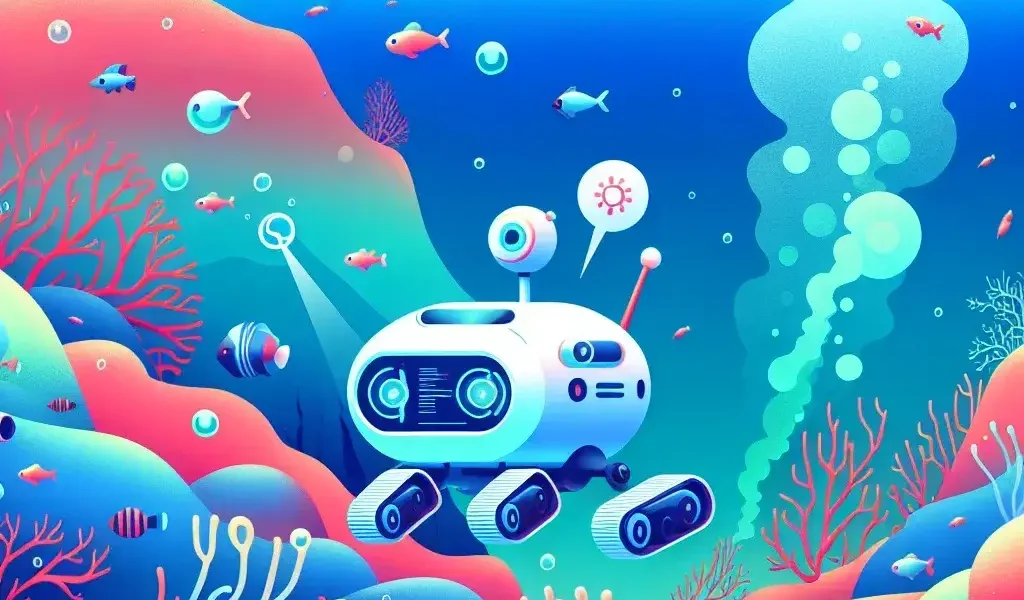AI Powered Underwater Robots Exploring Methane Seeps for Climate Studies
Introduction
The impact of climate change is one of the most pressing challenges of our time, and understanding the dynamics of greenhouse gases is vital in mitigating its effects. Among these gases, methane is particularly concerning due to its potency as a greenhouse gas—over 25 times more effective than carbon dioxide over a century. Recent advancements in technology, especially in artificial intelligence (AI) and robotics, have opened new avenues for studying methane emissions, especially from underwater seeps. This article delves into how AI-powered underwater robots are revolutionizing climate studies by exploring these methane seeps.
Understanding Methane Seeps
Methane seeps are natural occurrences where methane escapes from the Earth’s crust into the water column or atmosphere. They are found in various environments, including continental margins and ocean floors. Methane emissions from these seeps contribute significantly to global warming, making them crucial focal points for climate research.
Historical Context
Historically, the study of methane seeps relied on manual sampling and limited technological interventions. Researchers would deploy small vessels and divers to collect samples, which was time-consuming and often hampered by the harsh underwater environment. As the field of marine science evolved, researchers began utilizing remotely operated vehicles (ROVs) but still faced challenges in data collection and analysis.
The Rise of AI-Powered Underwater Robots
Recent technological advancements have led to the emergence of AI-powered underwater robots capable of exploring methane seeps with unprecedented efficiency. These robots integrate advanced sensors, machine learning algorithms, and autonomous navigation systems to conduct in-depth studies of marine environments.
Key Features of AI-Powered Underwater Robots
- Autonomous Navigation: Equipped with advanced sensors and AI, these robots can autonomously navigate complex underwater terrains, avoiding obstacles and mapping their environment.
- Real-Time Data Collection: The ability to gather data in real-time allows researchers to monitor methane emissions and other environmental variables constantly.
- Data Analysis: AI algorithms can analyze vast datasets quickly, identifying patterns and anomalies that would be challenging for human researchers to detect.
Implications for Climate Research
The deployment of AI-powered underwater robots in climate studies has several profound implications:
Improved Data Accuracy
The precision of data collected by AI-powered robots enhances the accuracy of climate models. By capturing real-time information from methane seeps, researchers can better understand the dynamics of methane emissions, leading to more reliable predictions about climate change.
Cost Efficiency
Using autonomous robots reduces the costs associated with traditional research methods. By minimizing the need for large research vessels and crews, institutions can allocate resources more effectively, focusing on data analysis and interpretation.
Accessibility
AI-powered robots can explore areas that are otherwise inaccessible to human divers due to depth, temperature, or hazardous conditions. This expands the scope of research, enabling scientists to access previously unexplored methane seeps.
Future Predictions
As AI and robotics continue to advance, the future of underwater exploration holds exciting prospects. We can anticipate:
- Enhanced AI algorithms that enable robots to make real-time decisions based on environmental stimuli.
- The development of swarms of underwater robots working collaboratively to gather data more efficiently.
- Integration with satellite data and machine learning for comprehensive climate models that consider multiple variables.
Challenges and Ethical Considerations
Despite its promise, the use of AI-powered underwater robots also presents challenges:
Technical Challenges
Building robots capable of withstanding harsh underwater conditions while maintaining high levels of functionality is a significant engineering challenge. The development of durable, energy-efficient robots remains a priority.
Data Privacy and Ethical Concerns
The deployment of underwater robots raises questions about data ownership and research ethics. Ensuring that the data collected is used responsibly and for the greater good is vital to maintaining public trust in scientific research.
Real Examples of AI-Powered Underwater Robots in Action
Organizations worldwide have begun deploying AI-powered underwater robots to study methane seeps:
- NOAA (National Oceanic and Atmospheric Administration): Utilizing AI-driven ROVs to monitor methane emissions in the Gulf of Mexico, NOAA has made significant strides in understanding the relationship between methane seeps and climate change.
- Ocean Infinity: This tech company focuses on autonomous underwater vehicle (AUV) technology and has been involved in deep-sea exploration projects that gather vital data for climate studies.
Conclusion
The integration of AI-powered underwater robots into climate research marks a significant leap forward in our understanding of methane seeps and their implications for global warming. By harnessing the power of AI, researchers can improve data accuracy, reduce costs, and explore previously inaccessible areas. As technology continues to advance, we are likely to see even more innovative applications in the fight against climate change.

